I’ve been spending some time in Chile while I have an unpaid sabbatical year. A couple of weeks ago, I was incredibly lucky to find out about and attend Cantera Nomade, a 4-day event for potters. It took a little bravery, but I signed up, sent some messages and found a way to pay the admission fee without a Chilean bank account, got my 5.5 hour bus tickets to Santiago, and packed my bag for a solo trip to the traditional pottery barrio of Pomaire.
Cantera Nomade vastly exceeded any expectations I might have had, and I’m super impressed with their organization. I’d guess there were somewhere around 75-100 attendees. We met at a high school in Pomaire, with on site workshops and side trips to the clay quarry and some of the many pottery studios in town. One of their major goals was to develop connections between attending ceramic artists and traditional potters, many of whom live in small towns like this one that have been specializing in particular styles of pottery for generations. I also appreciated their efforts to keep things affordable for artists – the organizers provided breakfast and assembled bunk beds in classrooms so that everyone would have a place to stay.
Pomairinos use local red clay known as greda, which is different from other clay (called arcilla). I heard some interesting discussions advocating for more study and classification of greda from different areas, since its properties vary depending on the soil and weather. People seem to agree that greda is red clay, and tends to be processed a bit rougher than the sorts of arcilla that we tend to buy at studios in the U.S.
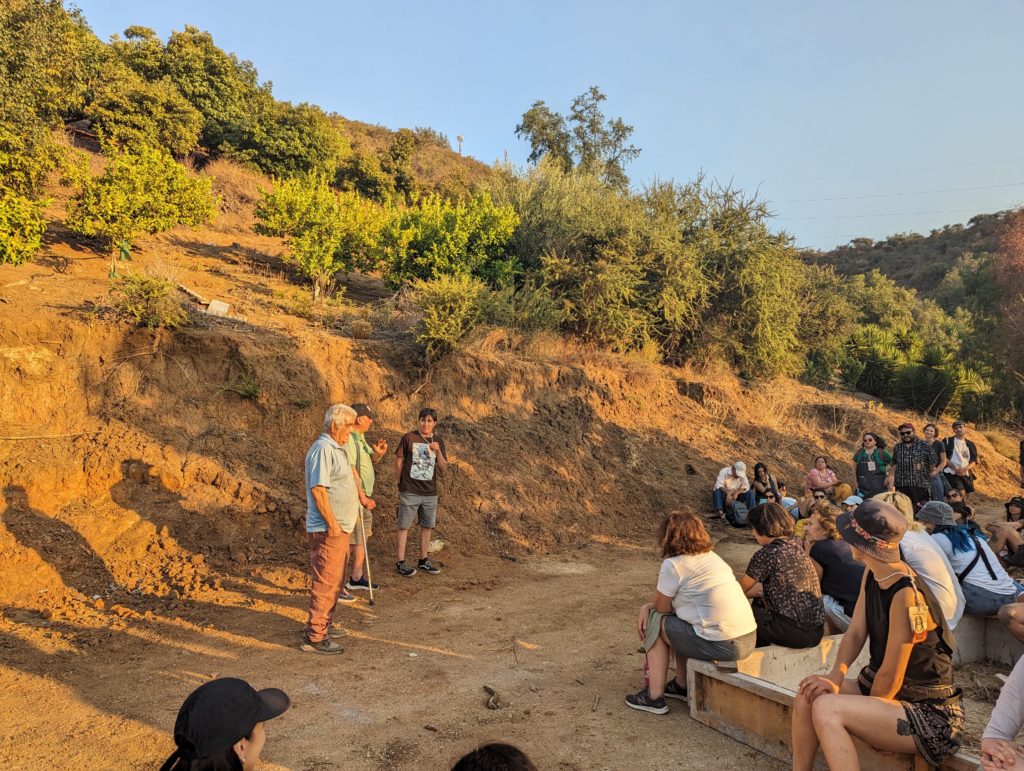
We hiked up to the quarry to learn from local people about how they dig and process the greda. My Spanish is limited, but I caught that there’s a canal nearby that they use to help transport clay. Traditionally, some of the pottery jobs in town have been gendered, with men doing most of the wheel throwing and women doing more of the handbuilding and decoration. There were a lot of questions from the audience about that, and I think some of them were challenging assumptions about gender roles. The organization did a great job of being inclusive and using gender neutral language, which can be hard to do in Spanish!
All of us signed up for 2 or 3 workshops. I did Traditional Pottery of Pomaire and Arcilla Calada (pierced open form clay). For the traditional pottery workshop, we hand built serving dishes with pinching techniques. Most people made pig faces on their dishes, but I initially misunderstood the constraints and made an octopus instead 😛 I was particularly interested in the surface polishing techniques we learned. After the clay was a little drier than leather hard, we wet the surface to make a very thin layer of slip, and then used quick strokes with a river rock to compress it into something smooth and shiny. Perfectionists could repeat this with a mesh fruit bag for an even finer finish after the river rocks.
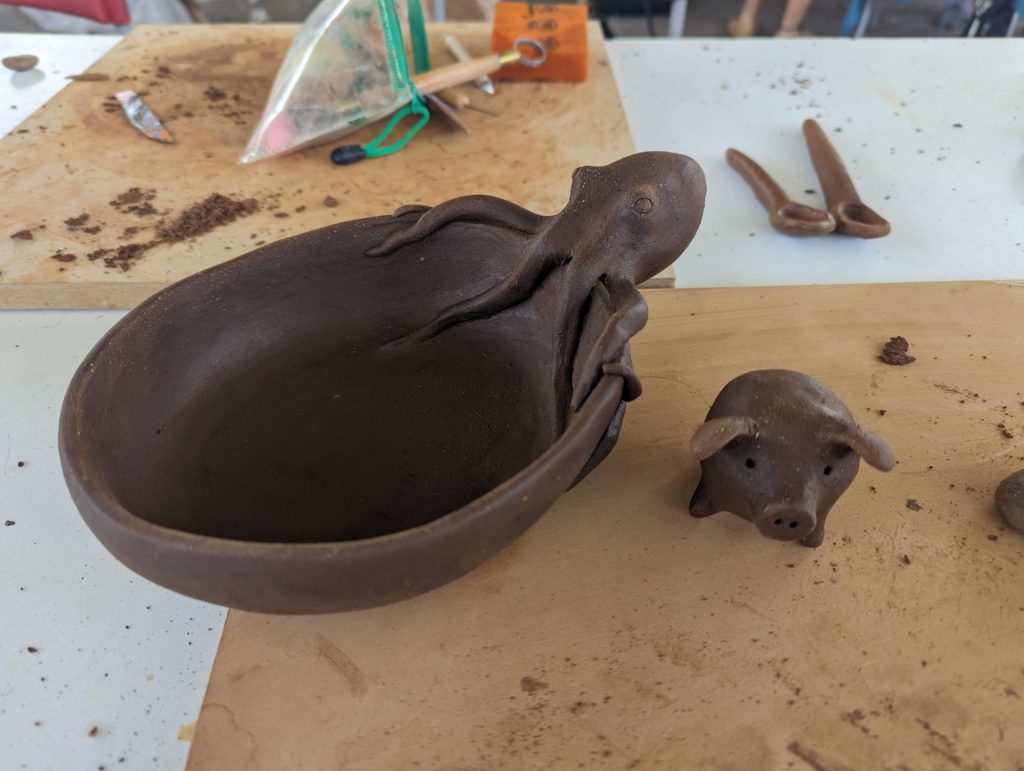
The Arcilla Calada workshop was at Taller Barros, a few blocks away from the school. The couple who started this workshop moved to Pomaire about 15 years ago, and they were the first potters in the area to use piercing techniques. I was impressed with the thought and preparation they put into their teaching, and I would absolutely recommend visiting and booking a workshop with them. Their family studio is lovely, with a hammocked courtyard, inspiring art everywhere, and Theo the cutest little puppy.
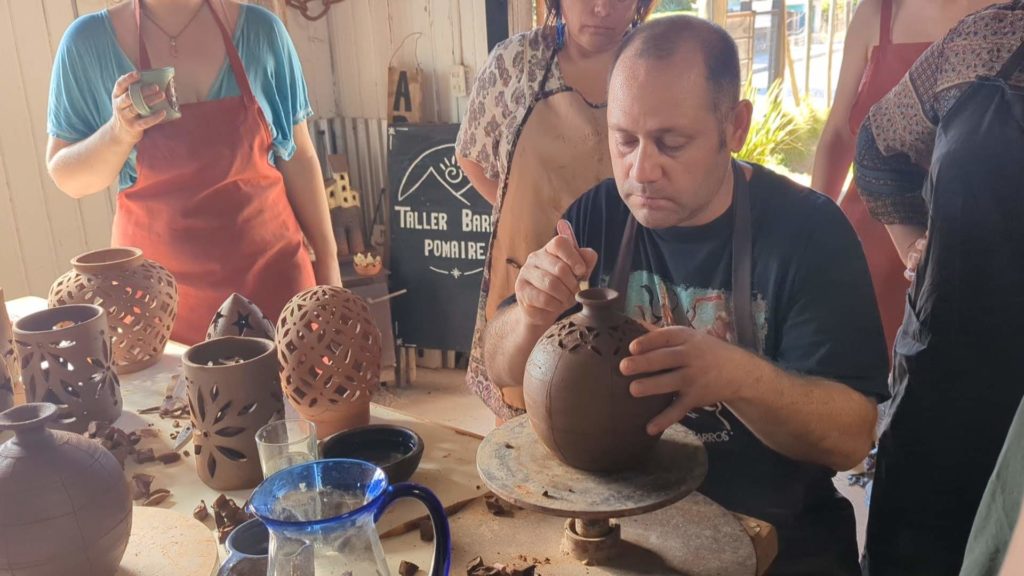
In addition to the workshops, there were demos happening all the time. I got to try the kick wheel, and managed to snag some time on the electric wheels as well. Almost everything was outside in 90+ degree heat, which presented some challenges, since clay will crack if it dries too quickly. Luckily, the main basketball court area was shaded.
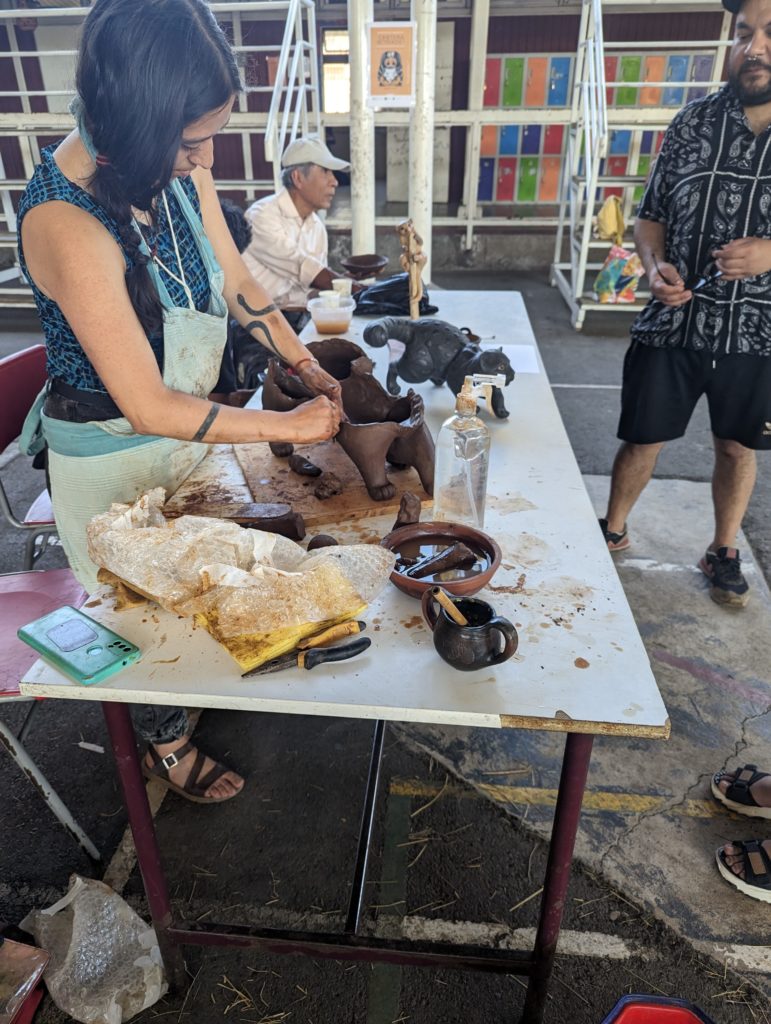
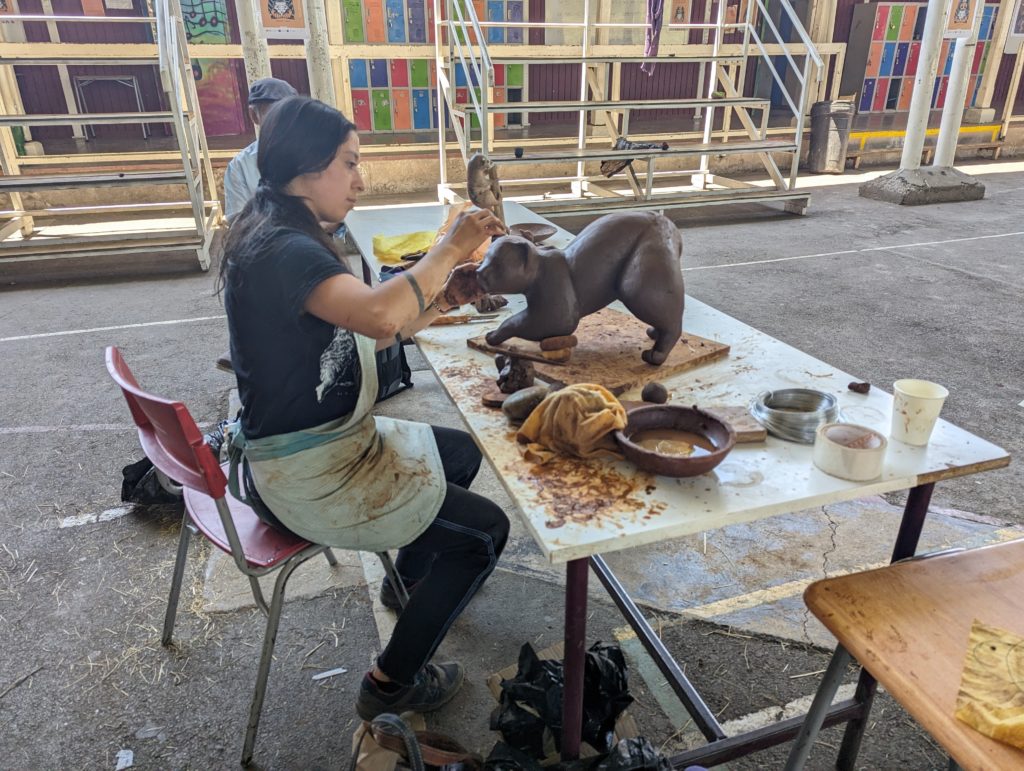
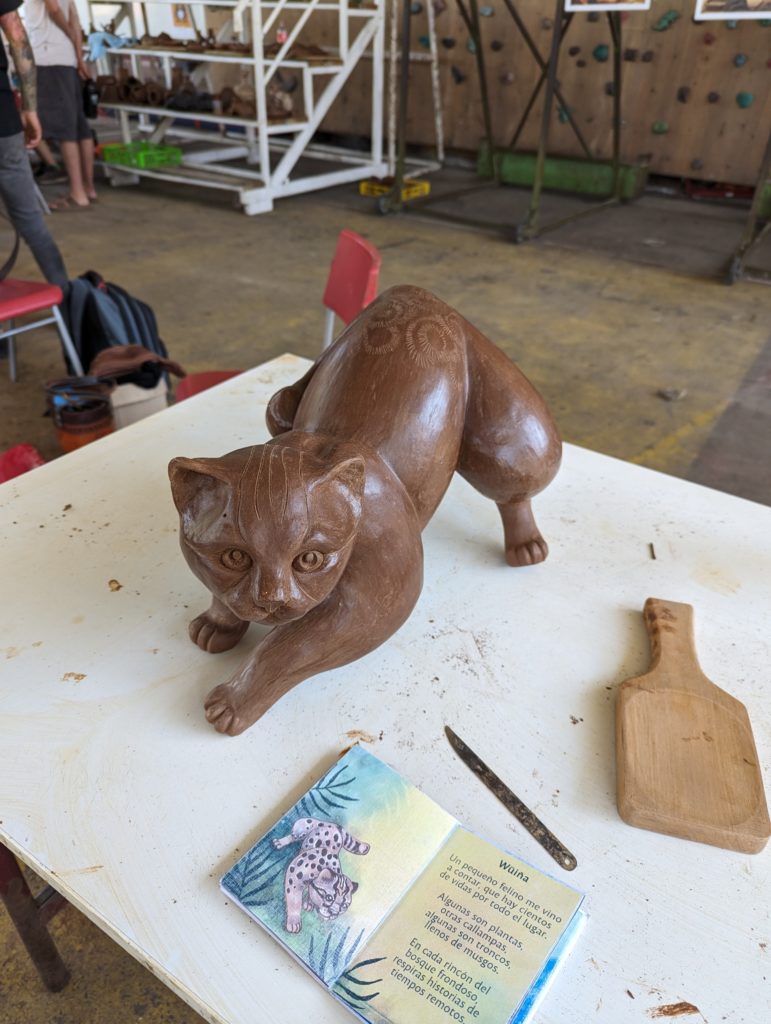
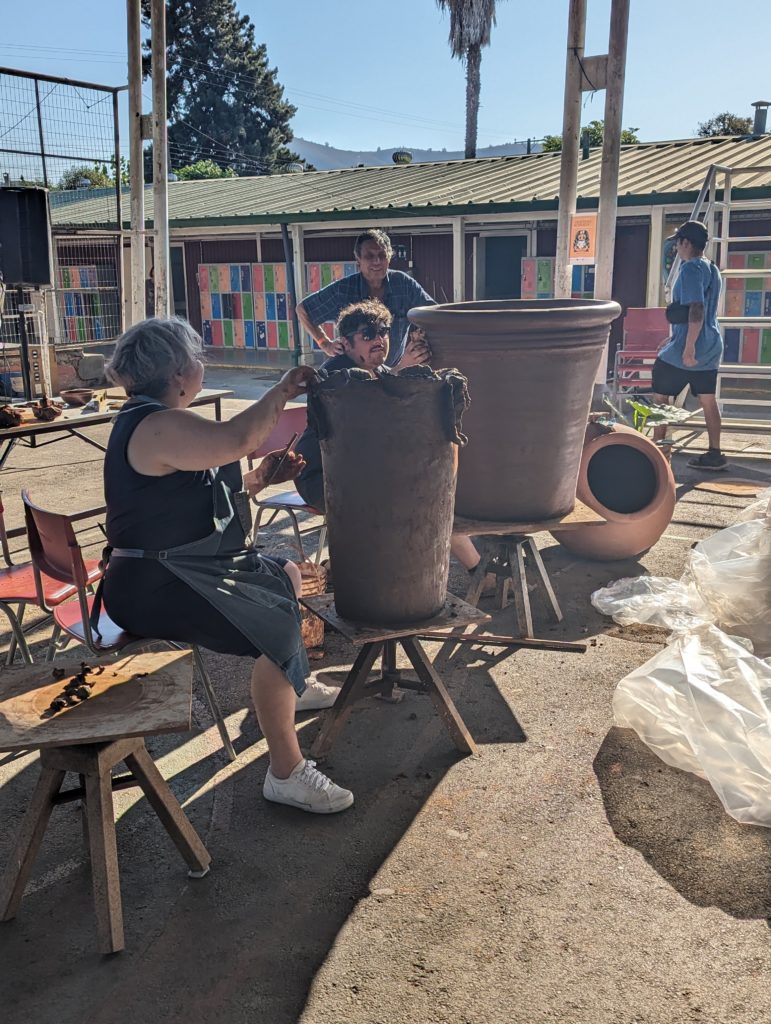
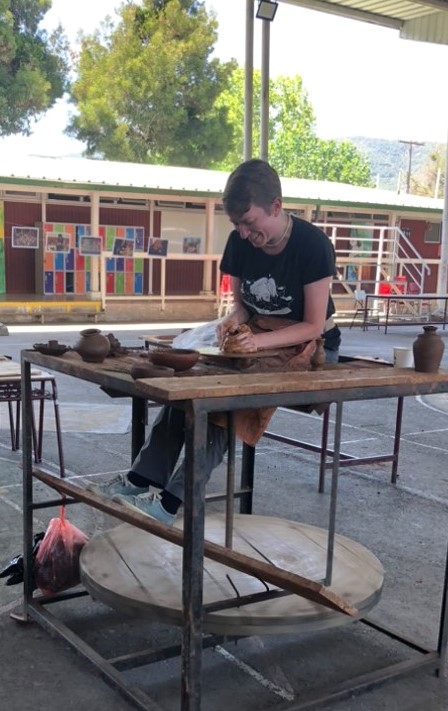
On the last night, we fired all our pieces. There was a giant existing kiln at the school, as well as a beautifully decorated new kiln built specifically for this event (supervised by Sebastian who works with a group called Hornos sin Fronteras – Kilns without Borders), and a temporary kiln custom sized for one enormous pot. All of them were wood fired in a single firing. Two live bands played, and we danced and did raku firings in the plaza near the school. It felt like most of the town came out for the celebration.
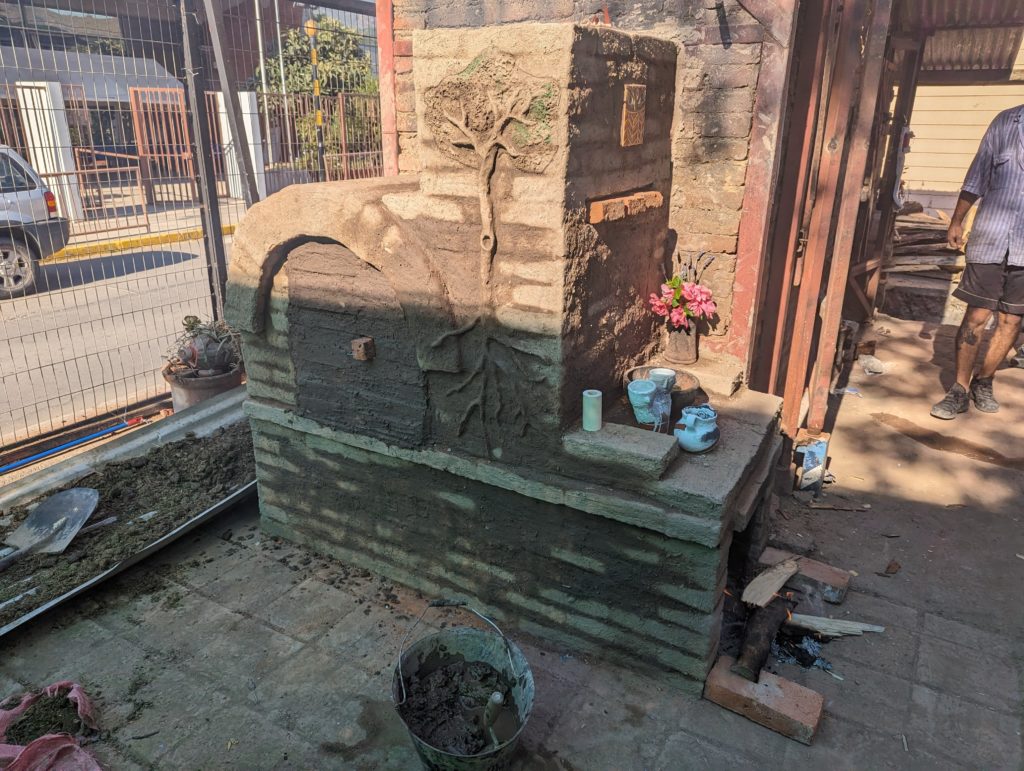
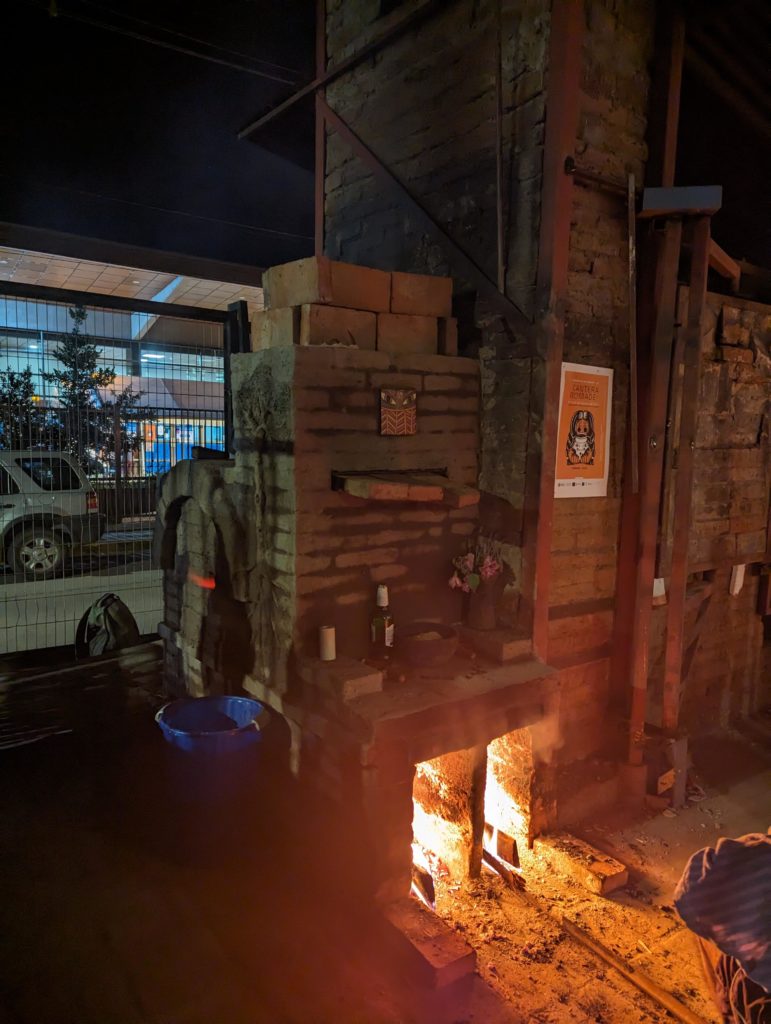
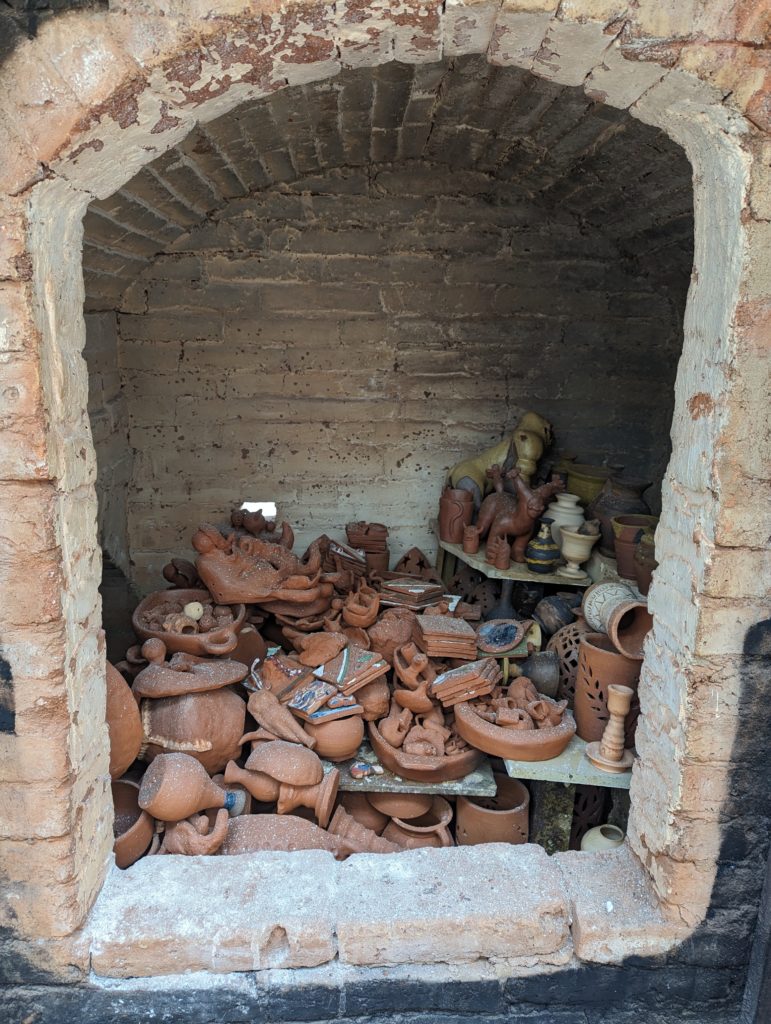
I met so many wonderful people through this, and hope to keep some of these connections. It was also great Spanish practice. I’m not sure I should admit how many times I’ve fantasized about getting a bit of land out in the country and building a woodfired kiln for pottery campouts in the past couple of weeks 😀
It sounds like Cantera Nomade may become an annual event. If so, I’ll be very tempted to return to Chile!


What an amazing experience, Sarah!! Thanks for sharing!
Thanks for sharing your really interesting adventure! Additional kudos to you for taking the leap without Spanish fluency!! Very inspirational.